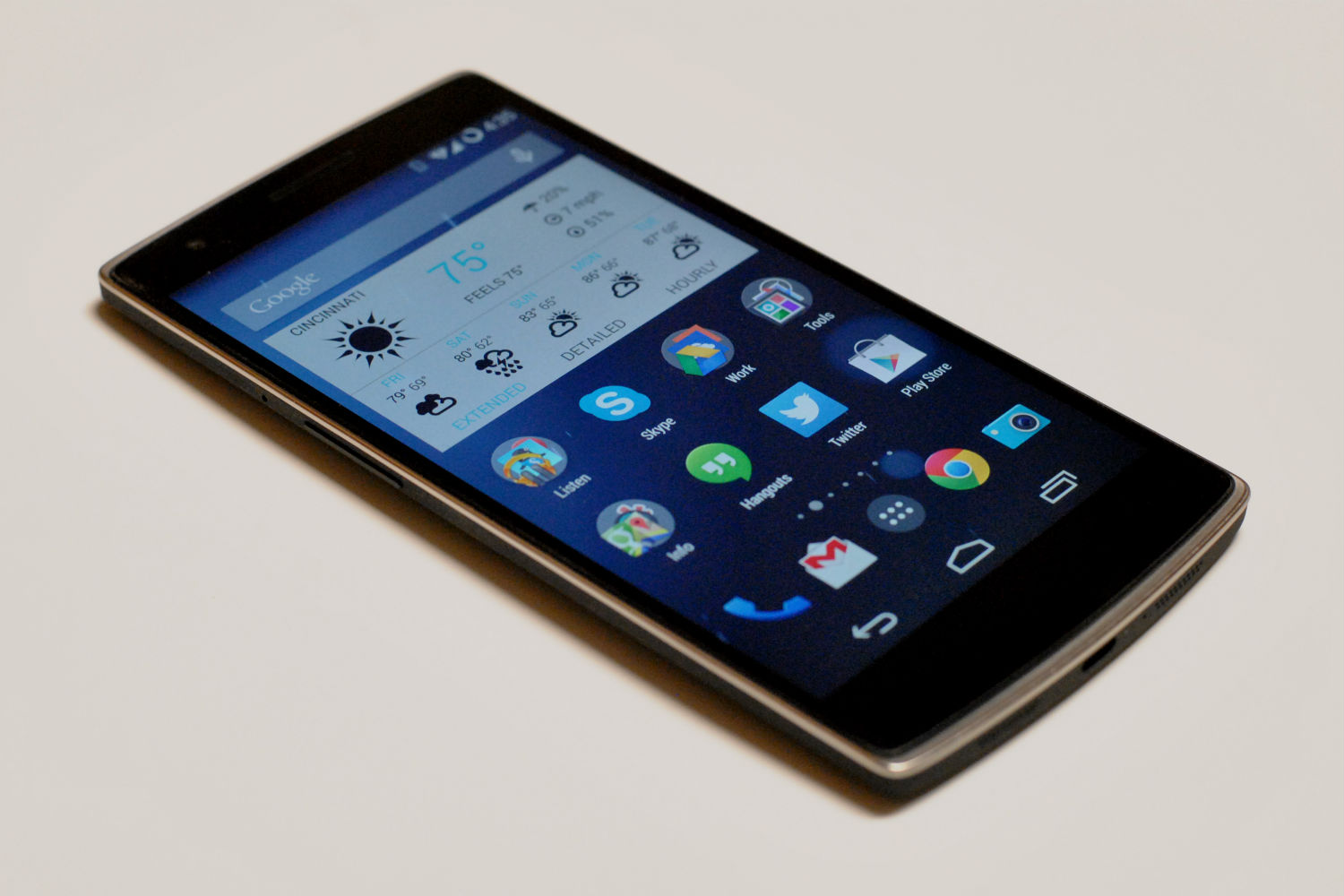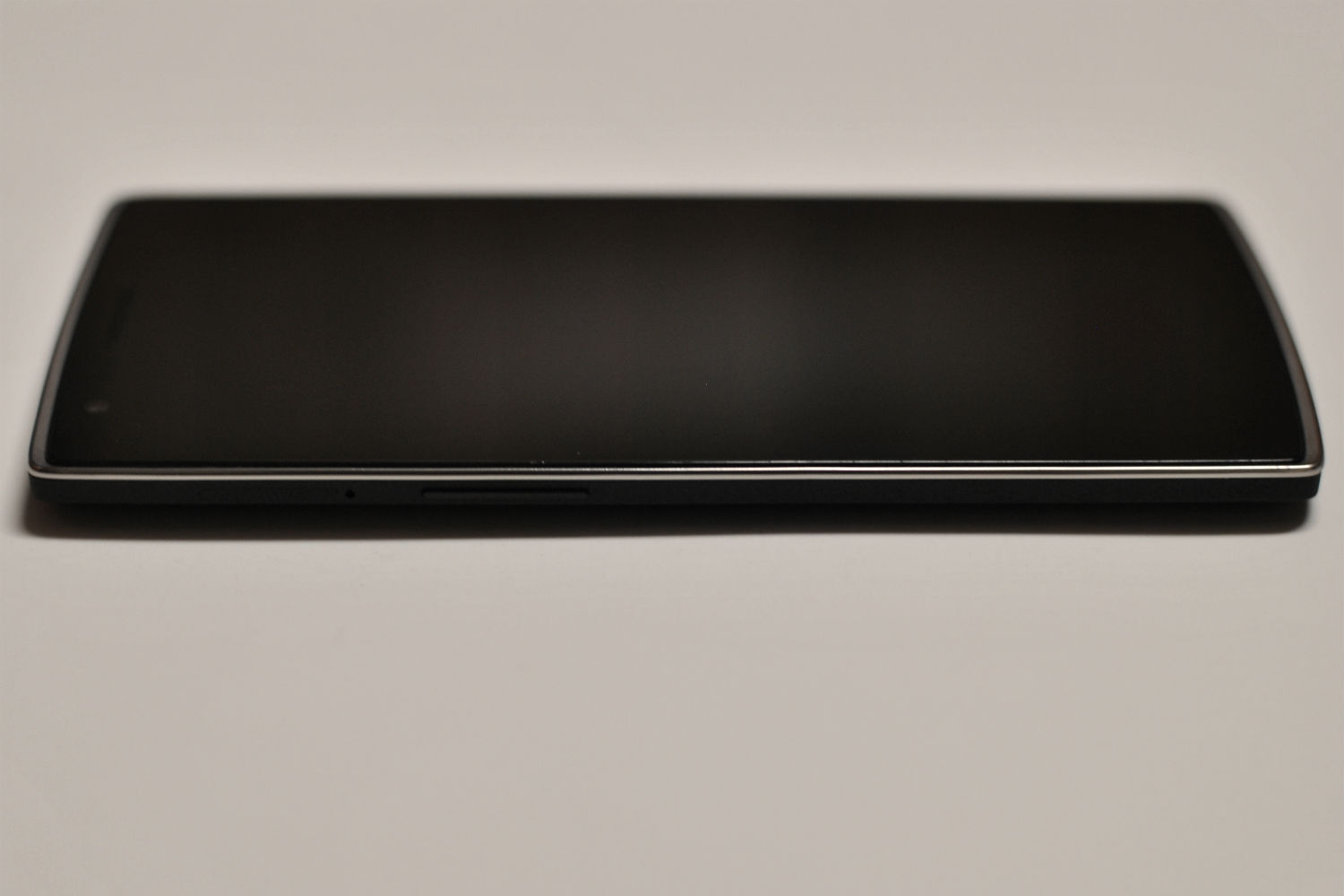
As I walked around Google’s I/O conference last month, my phone seemed to have a mythical status among the Android faithful.
“Is that the OnePlus One?” they’d ask. “How’d you get it? Can I see?” But it wasn’t the phone’s capabilities that made them so curious. It was the fact that the OnePlus One is nearly impossible to buy.
Right now, the only way to purchase a OnePlus One is through an invitation from another owner. And because OnePlus only seeded the phone to a small batch of original owners through a contest and other promotions, there aren’t a lot of Ones to go around. (Mine came direct from the OnePlus PR department, with no invites attached.)
It’s easy to see why Android geeks are clamoring for the OnePlus One. It has all the hallmarks of a high-end Android phone, including a 5.5-inch 1080p display, a 2.5 GHz quad-core processor, 3 GB of RAM, 64 GB of storage, a 13-megapixel rear camera and a 5-megapixel front camera.
But at $350 unlocked, it’s roughly half the price of an unlocked iPhone 5s or Samsung Galaxy S5. While you can get subsidized phones for cheaper, an unsubsidized plan from AT&T or T-Mobile would save a lot of money in the long run when paired with a OnePlus One.
Besides, the OnePlus One is a standout phone even without the cost savings.
The funny thing is that when I show this phone to regular people, it draws an entirely different reaction. There’s nothing outwardly impressive or even noteworthy about it, save for the black backing that’s as grippy as ultra-fine sandpaper. (A 16 GB white model has a ground cashew backing that’s supposed to feel like baby skin. I found someone at I/O with this version, and while it felt pretty smooth, I didn’t have my test baby on hand for comparison.)
Still, much of the OnePlus One’s appeal comes from what it doesn’t do. In contrast to so many other Android phones, the One is devoid of questionable gimmicks and flare for flare’s sake. The front of the phone is unadorned with tacky brand names or logos, and there are no dual-lens cameras, finicky fingerprint readers or problematic curved glass. When the screen is off, it’s nothing but a thin silver frame surrounding a panel of black glass. The simplicity is striking.

Start it up, and you’ll find something very close to stock Android 4.4, with hardly any unnecessary bloatware. The handful of tweaks that do exist come courtesy of CyanogenMod, a modification of stock Android that many enthusiasts install on their phones anyway. There’s a quick settings bar that appears above your notifications, a set of audio equalizer controls and a store for themes that alter the phone’s look and feel. But none of these additions feel intrusive, and most of them can be modified or removed.
Because the system is unburdened by junk and excessive visual flourishes, the OnePlus One always feels fast. The phone never left me hanging as I switched apps, swiped through homescreens and opened the camera. That’s not always the case with the latest mainstream Android phones.
The camera also lacks frilly features, but it’s dependable all around. Its f/2.0 aperture means it can handle low-light photography about as well as the HTC One (no relation), and while it’s not quite as good as HTC’s phone at fending off shaky hands, it’s capable of snapping much more detailed photos. I had no major issues with responsiveness either, as the phone takes about a second to establish focus and snaps photos instantly thereafter. My sole complaint is that you can’t hold the shutter button down for burst mode like you can on the HTC One and iPhone 5s. (There is a separate burst mode option, but that defeats the purpose when you’re trying to capture the perfect moment.)

The other thing you only appreciate with time is the OnePlus One’s battery. I tend to charge my phone every night, but after most days I had well over 50 percent battery life in the tank. That includes days when I was constantly using the phone’s mobile hotspot or watching lots of video. It was nice having a phone where battery life was not a concern at all.
My only problems with the OnePlus One tended not to rise above nitpick status. The display, while clear and crisp enough at 1080p, can be a bit hard to read outdoors on sunny days, and its auto-brightness setting doesn’t always hit the appropriate level. I could also do without some of the software tweaks that OnePlus has added, such as the settings shortcuts that are redundant with Android’s own quick settings panel, and the gesture-based shortcuts that I always seemed to enter accidentally. But as I said above, OnePlus allows you to switch these off.
Most of the time, the OnePlus One just did what it was supposed to do. And outside the geekier climes of Google I/O, it never drew attention to itself by causing headaches or getting in the way, and never felt like it was anything less than a high-end handset.
That’s exactly how a smartphone should be, and it’s sad that so many Android vendors feel the need to distract with flips and cartwheels instead. If OnePlus can actually distribute this phone more broadly–and I’m told an actual pre-order system is coming eventually–its ability to excite people without glitz and gimmickry will be its greatest trick.
More Must-Reads from TIME
- How Donald Trump Won
- The Best Inventions of 2024
- Why Sleep Is the Key to Living Longer
- Robert Zemeckis Just Wants to Move You
- How to Break 8 Toxic Communication Habits
- Nicola Coughlan Bet on Herself—And Won
- Why Vinegar Is So Good for You
- Meet TIME's Newest Class of Next Generation Leaders
Contact us at letters@time.com